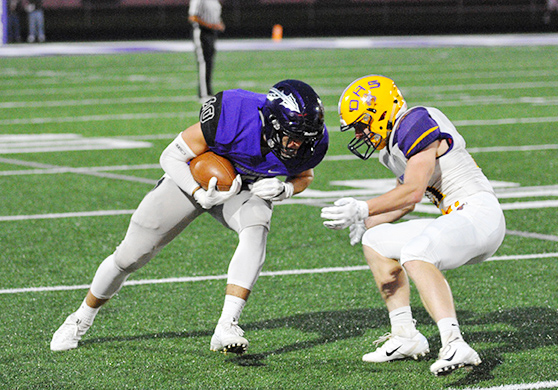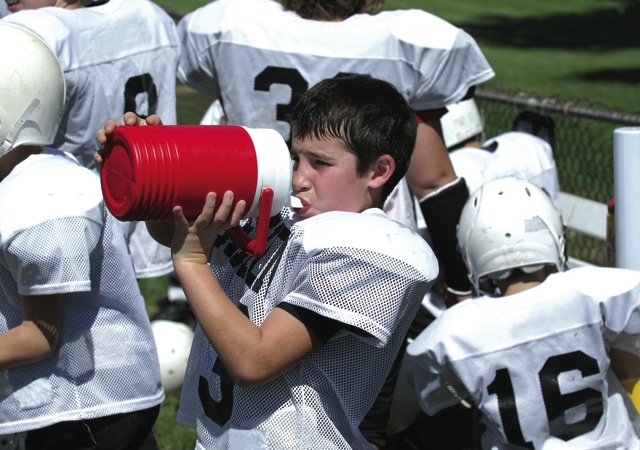Between the Lines: Use caution with concussion statistics
Concussions remain the most important health issue in sports, and that’s not going to change anytime soon. Not until we discover more effective and reliable methods for preventing, managing and recovering from traumatic brain injuries.
The attention is warranted. Concussions can not only end an athlete’s playing career but impair cognitive functioning for the rest of his or her life. That’s the primary concern for those who have no expectations of playing at the professional level. Just look at Indiana University quarterback Zander Diamont, who this fall announced he would quit football after his junior year to protect his brain from further harm.
 Athletes, especially those in contact sports, are rightly concerned but there comes a point when the lines begins to blur. They must use caution and practice proper technique, but they shouldn’t be terrified of sports.
Athletes, especially those in contact sports, are rightly concerned but there comes a point when the lines begins to blur. They must use caution and practice proper technique, but they shouldn’t be terrified of sports.
Last summer, researchers at the University of California, San Francisco published a study that suggested concussions had doubled among U.S. kids from 2007 to 2014. Most alarming were its findings that concussions were up 243 percent among 10- to 14-year-olds and 187 percent among older teenagers.
Studies like these have triggered a lot of alarms, and not only among sports injury researchers. Parents and their children have taken notice, and the apparent spike in brain injuries has led many of them to shun sports all together. One example is high school football where, according to the NFHS, participation is down more than 28,000 nationwide since the 2009-10 season. Surveys have found that concerns over injuries is one of the reasons kids are dissuaded from the sport.
» MORE: Sports Medicine: Managing concussions in sports
There’s nothing wrong with being cautious and parents should care about the wellbeing of their children, but studies like the one from the University of California should be given proper context. Dozens of researchers in recent years have suggested concussion numbers are rising, but it’s possible — even likely — that the statistics don’t fairly represent what’s happening.
Consider how far we’ve come over the last decade. When I was in high school, players didn’t talk about concussions, baseline tests and detection strategies. In most cases, unless something was broken or torn, they shook it off and returned to action. That’s not because coaches neglected athletes, but rather that nobody understood the long-term effects of head injuries.
Today, we educate coaches and ATs about concussions and detection. Schools and state organizations have begun tracking and reporting these injuries to determine what preventative strategies are effective. Strict guidelines require that every jarring hit faces scrutiny from those on the sidelines.
These initiatives mean we’re diagnosing more concussions than ever before, which is why it’s unfair to suggest that the rate of traumatic brain injuries is growing. The fact is that our means for detecting them are better than ever.
Athletes should be aware of risks. But mischaracterizing those risks portrays sports, like football, as a death trap for young athletes. Sports medicine and technology has come a long way over the last decade and our efforts over the next 10 years will only improve our abilities to protect and treat athletes.
Kevin Hoffman is the editorial director of Coach & Athletic Director. He can be reached at [email protected].





